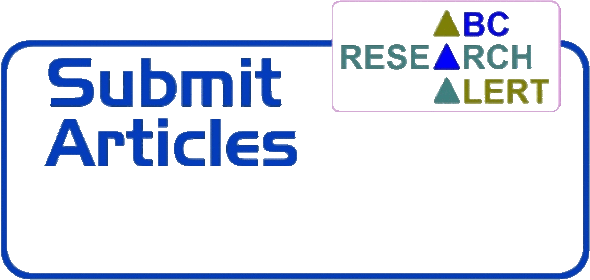Essential Pillars of Software Engineering: A Comprehensive Exploration of Fundamental Concepts
DOI:
https://doi.org/10.18034/ra.v5i3.655Keywords:
Software Engineering, Software Systems, Methodologies, Core Concepts, Implementation, CollaborationAbstract
This article is a beneficial resource that guides software engineers in grasping fundamental principles for proficient development and fosters a thorough awareness of the subtle dynamics in the software engineering world. By understanding these basic ideas, software engineers can build a strong foundation, which in turn helps to facilitate practical cooperation and the production of high-quality software solutions in a technological landscape that is constantly shifting. It strongly emphasizes the significance of design patterns, the readability of code, and efficient ways for effectively solving problems. In this article, a detailed summary of fundamental principles that are essential to the field being discussed is presented. The article highlights the crucial roles that abstraction, encapsulation, and modularity play in constructing resilient and adaptive software systems. It covers critical areas such as these. An emphasis is placed on the significance of scalability and effective problem-solving methodologies, which provide insights into developing software that can adapt to changing requirements.
Downloads
References
Baddam, P. R. (2017). Pushing the Boundaries: Advanced Game Development in Unity. International Journal of Re-ciprocal Symmetry and Theoretical Physics, 4, 29-37. https://upright.pub/index.php/ijrstp/article/view/109
Baddam, P. R., & Kaluvakuri, S. (2016). The Power and Legacy of C Programming: A Deep Dive into the Language. Technology & Management Review, 1, 1-13. https://upright.pub/index.php/tmr/article/view/107
Chatzigeorgiou, A., Theodorou, T. L., Violettas, G. E., Xinogalos, S. (2016). Blending an Android Development Course with Software Engineering Concepts. Education and Information Technologies, 21(6), 1847-1875. https://doi.org/10.1007/s10639-015-9423-3
Chen, C., Wang, J., Xu, X. (2017). The Research and Practice of Spacecraft Software Engineering. IOP Conference Series. Earth and Environmental Science, 69(1). https://doi.org/10.1088/1755-1315/69/1/012144
Dekkati, S., & Thaduri, U. R. (2017). Innovative Method for the Prediction of Software Defects Based on Class Imbal-ance Datasets. Technology & Management Review, 2, 1–5. https://upright.pub/index.php/tmr/article/view/78
Dekkati, S., Thaduri, U. R., & Lal, K. (2016). Business Value of Digitization: Curse or Blessing?. Global Disclosure of Economics and Business, 5(2), 133-138. https://doi.org/10.18034/gdeb.v5i2.702
Farid, A. B. (2015). Proactive Software Engineering Approach to Ensure Rapid Software Development and Scalable Production with Limited Resources. International Journal of Advanced Computer Science and Applications, 6(11). https://doi.org/10.14569/IJACSA.2015.061120
Gerosa, M. A., Redmiles, D., Bjørn, P., Sarma, A. (2015). Editorial: Thematic Series on Software Engineering From a Social Network Perspective. Journal of Internet Services and Applications, 6(1), 1-5. https://doi.org/10.1186/s13174-015-0038-0
Ghazi, P., Glinz, M. (2017). Challenges of Working with Artifacts in Requirements Engineering and Software Engi-neering. Requirements Engineering, 22(3), 359-385. https://doi.org/10.1007/s00766-017-0272-z
Graciamary, A. C., Chidambaram. (2016). Enhanced Re-Engineering Mechnanism to Improve the Efficiency of Soft-ware Re-Engineering. International Journal of Advanced Computer Science and Applications, 7(11). https://doi.org/10.14569/IJACSA.2016.071136
Graziotin, D., Wang, X., Abrahamsson, P. (2014). PeerJ. Happy Software Developers Solve Problems Better: Psycho-logical Measurements in Empirical Software Engineering. https://doi.org/10.7717/peerj.289
Insfran, E., Chastek, G., Donohoe, P., Leite, C. S. D. P. (2014). Requirements Engineering in Software Product Line Engineering. Requirements Engineering, 19(4), 331-332. https://doi.org/10.1007/s00766-013-0189-0
Kaluvakuri, S., & Lal, K. (2017). Networking Alchemy: Demystifying the Magic behind Seamless Digital Connectivity. International Journal of Reciprocal Symmetry and Theoretical Physics, 4, 20-28. https://upright.pub/index.php/ijrstp/article/view/105
Kaluvakuri, S., & Vadiyala, V. R. (2016). Harnessing the Potential of CSS: An Exhaustive Reference for Web Styling. Engineering International, 4(2), 95–110. https://doi.org/10.18034/ei.v4i2.682
Lal, K. (2015). How Does Cloud Infrastructure Work?. Asia Pacific Journal of Energy and Environment, 2(2), 61-64. https://doi.org/10.18034/apjee.v2i2.697
Lal, K. (2016). Impact of Multi-Cloud Infrastructure on Business Organizations to Use Cloud Platforms to Fulfill Their Cloud Needs. American Journal of Trade and Policy, 3(3), 121–126. https://doi.org/10.18034/ajtp.v3i3.663
Paul, P. K., Bhuimali, A., Mewada, S. L., Dey, J. L. (2016). Is Green Computing a Social Software Engineering Do-main?. International Journal of Applied Science and Engineering, 4(2), 67-73. https://doi.org/10.5958/2322-0465.2016.00008.3
Song, X. J., Zeng, Z. L. (2014). Research on Application of Software Engineering Theory in Software Development. Applied Mechanics and Materials, 687-691, 1921-1924. https://doi.org/10.4028/www.scientific.net/AMM.687-691.1921
Thaduri, U. R., Ballamudi, V. K. R., Dekkati, S., & Mandapuram, M. (2016). Making the Cloud Adoption Decisions: Gaining Advantages from Taking an Integrated Approach. International Journal of Reciprocal Symmetry and Theoretical Physics, 3, 11–16. https://upright.pub/index.php/ijrstp/article/view/77
Vadiyala, V. R., & Baddam, P. R. (2017). Mastering JavaScript’s Full Potential to Become a Web Development Giant. Technology & Management Review, 2, 13-24. https://upright.pub/index.php/tmr/article/view/108
Vadiyala, V. R., Baddam, P. R., & Kaluvakuri, S. (2016). Demystifying Google Cloud: A Comprehensive Review of Cloud Computing Services. Asian Journal of Applied Science and Engineering, 5(1), 207–218. https://doi.org/10.18034/ajase.v5i1.80
Downloads
Published
Issue
Section
License
Copyright (c) 2017 Vishal Reddy Vadiyala

This work is licensed under a Creative Commons Attribution-NonCommercial 4.0 International License.
ABC Research Alert is an Open Access journal. Authors who publish with this journal agree to the following terms:
- Authors retain copyright and grant the journal the right of first publication with the work simultaneously licensed under a CC BY-NC 4.0 International License that allows others to share the work with an acknowledgment of the work's authorship and initial publication in this journal.
- Authors are able to enter into separate, additional contractual arrangements for the non-exclusive distribution of the journal's published version of their work (e.g., post it to an institutional repository or publish it in a book), with an acknowledgment of its initial publication in this journal. We require authors to inform us of any instances of re-publication.
















